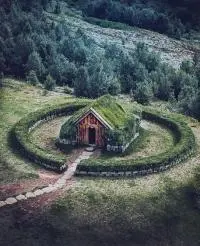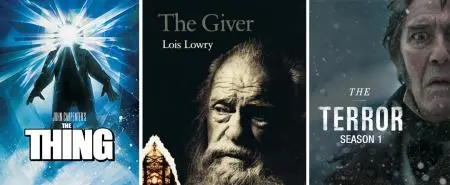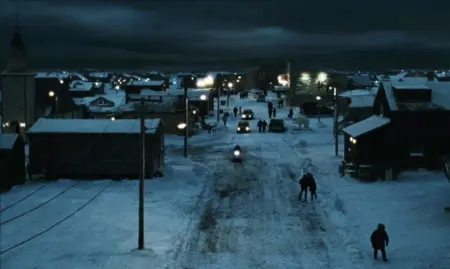Are you thinking about writing a novel? Do you have the authority to tell this story, or do you need to do some research? Let me walk you through the process on my last book, Incarnate, and I’ll see if these suggestions can help you with your next novel.
"Incarnate"
My latest novel, Incarnate, is out in early 2024 and I did a lot of research for this one. I think it’s some of my best work to date. It’s an Arctic horror, sin-eater novel, and so there were quite a few threads, plots, and details running through this book that I wanted to research before I started writing.
Key Elements
 So what are the key elements in your book. Here is what I focused on with Incarnate:
So what are the key elements in your book. Here is what I focused on with Incarnate:
- THE ARCTIC: I knew the cold, the weather, the danger of this place was going to be the backdrop for this book. Living in Chicago, sure, I know winter, cold, snow, ice, and wind. But this is much more. Loosely based on a mix of Barrow, Alaska and the Arctic, this was the first aspect of the book that I knew would require more research. What happens during those sixty days of night? Being a maximalist, I knew this was going to be a place to unpack and use all five senses.
- SIN-EATERS: Because the main character, Sebastian, is a sin-eater, I had to do a lot of research into what exactly a sin-eater is—how it all works, the rituals, the rules for absolution, and what might come after the ceremony. So not only did I have to research what a sin-eater does, but again, being a maximalist (and a bit of a foodie) I knew these meals would be intense. Every meal he eats, it’s something I cook, and know well (starting with a bowl of chili). Add to that the euphoria of the best meal ever, then turning into something really gross (depending on how evil the person was) and this was a place to tap into the grotesque, which I did.
- CREATURES: While I didn’t want this to be a monster book, per se, I knew that after the sin-eating, my protagonist was going to birth some creatures into the world. So I did a lot of research on different monsters, not just for Sebastian’s creations, but for the second act, which is set in a desert wasteland, with a Mother Monster protagonist. And then add to that the various dangerous animals in the woods and Arctic around them—everything from your everyday wolves and bears, to supernatural beasts.
These were the three key elements of the book. And I knew that I needed to do research into all three areas.
Reading
The first thing I did was to read every short story I could find that had anything to do with the Arctic, winter, Alaska, and the cold. So I revisited Rich Larson’s story, “Dark Warm Heart,” which focuses on a wendigo. I read Daniela Tomova’s “The Loneliness of the Long-Distance Reporter,” studying her revenants. And I revisited my own novelette, “Ring of Fire,” and many other tales. I picked up books like The Terror, The Ritual, Snowblind, and Stranded. I read non-fiction such as Into the Wild, Icebound, and Into the Abyss. It was intense. I tracked down whatever I could about sin-eaters too—Sin Eater, The Last Sin Eater, and Margaret Atwood’s story, “The Sin-Eater.” For the monsters I read my old D&D DM guides, and checked out various bestiaries, including a book on kaiju—The Kaiju Survival Guide.
Film and Television
I did the same thing with television and film. I re-watched The Thing, and it holds up. I watched the series, The Terror, which was also quite good (20 episodes). 30 Days of Night is more gory than what I wanted to do, but I watched it anyway. I watched Hold the Dark, with Jeffery Wright, which was quite good as well. I filled my head with images, setting, sensory details, monsters, and death. It was all crucial to my understanding of this place I was going to create.

Cooking
I revisited every meal and item that I was going to cook in this novel, and wrote down the ingredients, or printed out the recipes. Many of them I made again just to go through the motions, and try to tap into not only the ingredients, but the smells, tastes, sensations, notes, and flavors. I made a list of words to describe the beauty of these meals, and then, using a thesaurus, I added a few more. And then I flipped it—taking these magical meals, and making the horrible—synonyms turning into antonyms—trying to find ten ways to say bitter, sour, and rotten.
Flora and Fauna
I also had to do quite a bit of research into the flora and fauna of my locations. What kind of trees grow in Alaska and the Arctic, and what are the various names. I can’t just say “pine tree” over and over, and then as I ascend the mountain, what falls away, and what remains? Same thing for the animals—what are the most common creatures and which ones are dangerous—birds, fish, wolves, bears, etc. And when I flipped over to the second act, to the desert wasteland, I had to start all over again—what creatures survive in the desert, and what kinds of dangers exist here.
Life in Barrow
I also did quite a bit of work to understand what life is like in Barrow, Alaska and the Arctic. That came about in the stories, books, shows, and films, but I also watched YouTube videos on whaling, on what they eat up there, how hard it gets, what that isolation is like, how the Inuit live, and what is real, what is myth. I even hired an Arctic advisor (Repo Kempt) who has spent extensive time in Alaska and the Arctic to make sure I didn’t screw up anything native, about the weather, the rituals, the dangers, and the isolation.

Images
Along the way I searched for various key words—Arctic, sin-eater, Alaska, wilderness, etc. and the put together a folder of images that I used for inspiration. If I ever got stuck, I’d go back to a few key images and remember what it was all about.
In Conclusion
So I think you can see why it took me two years of reading and watching before I was able to sit down, unpack, and let it all hang out. There was extensive editing and revision based on Repo’s suggestions, and I had to stop now and then to dig even deeper into various elements of the book, while writing it. But with a goal of 4,000 words a day—broken down into four 1,000-word scenes (essentially flash fictions) I managed to write 56,000 words in two weeks, before I had to get back to teaching. I then wrote 4,000 words a day every Friday, until I got over 75,000 words. But for the most part, I didn’t have to stop for too long while writing it. I had read the stories, the books, and watched the shows, the films, and so my head was full of images, emotions, tension, danger, setting, sensory details, and authority. By doing this hard work before I sat down, I could focus on bringing the characters to life, so that you cared about them, and were hopefully moved by what they went through.
Hope this all helps. Best of luck to you! Post up questions here if you have any.
Get The Terror by Dan Simmons at Bookshop or Amazon
Get Snowblind by Christopher Golden at Bookshop or Amazon

About the author
Richard Thomas is the award-winning author of seven books: three novels—Disintegration and Breaker (Penguin Random House Alibi), as well as Transubstantiate (Otherworld Publications); three short story collections—Staring into the Abyss (Kraken Press), Herniated Roots (Snubnose Press), and Tribulations (Cemetery Dance); and one novella in The Soul Standard (Dzanc Books). With over 140 stories published, his credits include The Best Horror of the Year (Volume Eleven), Cemetery Dance (twice), Behold!: Oddities, Curiosities and Undefinable Wonders (Bram Stoker winner), PANK, storySouth, Gargoyle, Weird Fiction Review, Midwestern Gothic, Gutted: Beautiful Horror Stories, Qualia Nous, Chiral Mad (numbers 2-4), and Shivers VI (with Stephen King and Peter Straub). He has won contests at ChiZine and One Buck Horror, has received five Pushcart Prize nominations, and has been long-listed for Best Horror of the Year six times. He was also the editor of four anthologies: The New Black and Exigencies (Dark House Press), The Lineup: 20 Provocative Women Writers (Black Lawrence Press) and Burnt Tongues (Medallion Press) with Chuck Palahniuk. He has been nominated for the Bram Stoker, Shirley Jackson, and Thriller awards. In his spare time he is a columnist at Lit Reactor and Editor-in-Chief at Gamut Magazine. His agent is Paula Munier at Talcott Notch. For more information visit www.whatdoesnotkillme.com.







